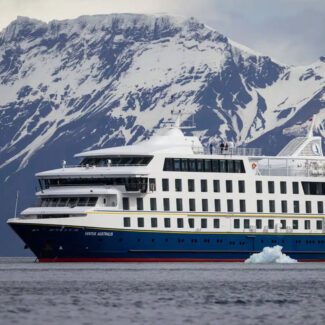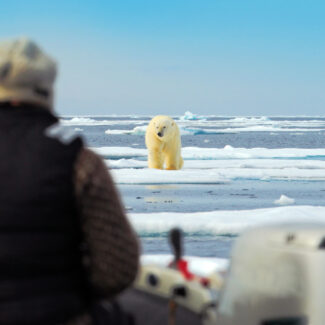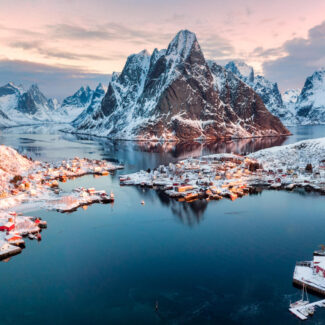Day & Night, Daylight Hours & The Midnight Sun In Antarctica
“Land of the Midnight Sun”—we’re talking Norway, right? Well, strictly speaking, the Land of the Midnight Sun refers to a lot more territory than just that Scandinavian nation, including a realm about as far removed from reindeer as you can get: Antarctica, the White Continent.
Is it ever night time in Antarctica? How many hours of daylight in Antarctica are there? What exactly is Antarctica’s day and night cycle like? Sounds like we need to roll up our sleeves, slip on our shades—or, conversely, flip on our seasonal-affective-disorder-combatting light visors—and dig right into the intriguing subject of daylight in Antarctica!
Antarctica Daylight: The Yearly Solar Cycle at the Bottom of the World
Unless you’ve got a lot of on-the-ground experience in northern Norway or other corners of the Arctic, the solar cycle in Antarctica can definitely turn your head upside down, so radically different as it is from where the vast bulk of the world’s population calls home.
If you recall primary-school geography well enough, you might not need to read the following brief introductory material. But let’s face it: More than a few of us have likely forgotten how some of the nuts-and-bolts of the planet and our Solar System work, and they’re essential to really understanding what’s going on down here at the bottom of the world.
A Little Physical Geography 101
Earth—that big blue wonderful home of ours here in the Milky Way Galaxy—orbits around the Sun on what’s called the plane of the ecliptic. If the rotational axis of Earth—an imaginary line run through the planet that connects the North and the South poles—were aligned exactly perpendicular with this plane, we’d experience day and night on a daily basis, but no seasons.
Well, as it happens, Earth’s axis of rotation is not perpendicular to the elliptical plane, but rather tilted away from the perpendicular by 23.5 degrees. That’s Earth’s inclination, and it gives our planet its seasonality and exerts a big-time influence on climate zones.
The Sun illuminates one-half of Earth constantly; this is the circle of illumination. The Tropic of Cancer and the Tropic of Capricorn, which lie 23.5 degrees north and south, respectively, of the equator, mark the respective northern and southern limits of sunlight meeting Earth’s surface at a right angle. During the June solstice, sun rays hit the Tropic of Cancer in the Northern Hemisphere straight-on; during the December solstice, they do the same at the Tropic of Capricorn in the Southern Hemisphere.
The midway points between those solstices are the equinoxes, when the circle of illumination just brushes both the North Pole and the South Pole. During the June solstice, the North Pole and points 23.5 degrees south of it lie completely within the circle of illumination and experience 24 hours of daylight. On that date, meanwhile, the South Pole and points 23.5 degrees north of it are cast in 24 hours of darkness. The opposite situation occurs during the December solstice.
The parallels 23.5 degrees from the two poles—at 66.5 degrees North and South latitude—which define the parts of the globe experiencing the 24-hour day and night on the solstices are the polar circles. Specifically, 66.5 degrees North marks the Arctic Circle, and 66.5 degrees South marks the Antarctic Circle—our concern in this guide, obviously.
This stunning Antarctic sunset, or “midnight sun,” beautifully illustrates the continent’s unique yearly solar cycle, where perpetual daylight transforms the landscape with breathtaking, extended displays of color.
The Polar Night & Midnight Sun in Antarctica
The Antarctic Circle defines the northernmost parallel along which 24 hours of daylight—the Midnight Sun—prevail on the December (austral summer) solstice, aka Midsummer’s Day, and 24 hours of darkness—the Polar Night—define the June (austral winner) solstice, aka Midwinter’s Day. While by far the majority of the White Continent lies firmly within the Antarctic Circle, the northern portion of the Antarctic Peninsula (which extends farther north than any other part of the continent) and a few smidgens of East Antarctica’s remote coast protrude beyond it.
The relative duration of the Midnight Sun and Polar Night increases as one travels southward from the Antarctic Circle, until at the South Pole itself the year is roughly evenly split between 24 hours of daylight and 24 hours of nighttime. The Sun, in theory, rises at the South Pole on the September (austral vernal) equinox and remains above the horizon until it sets on the March (austral autumnal) equinox. In other words, there’s essentially a single yearly sunrise and a single yearly sunset there. (Read more about sunrise and sunset in Antarctica here.)
Atmospheric refraction means that the Sun can be seen when it’s a few degrees below the horizon, so an observer at the South Pole might actually discern sunrise a couple of days before the vernal equinox and sunset a couple of days after the autumnal equinox.
When the Sun’s about 18 degrees or less below the horizon, dim reflected light produces the gloaming period of twilight. A twice-daily experience at lower latitudes (before sunrise and after sunset), twilight reigns for extended periods in Antarctica. The wintertime Polar Night across large swaths of Antarctica north of the South Pole and south of the Antarctic Circle includes plenty of twilight as opposed to full midnight-style darkness.
Experience the magic of Antarctica’s midnight sun, where the sun never truly sets during summer, painting the sky with breathtaking hues and creating an otherworldly glow over the icy landscape.
Effects of the Midnight Sun & Polar Night on the Human Experience of Antarctica
Although the White Continent has no permanent human population, it does see year-round occupation by a rotating roster of scientists and staff posted to the dozens of Antarctic research stations.
The personnel who over-winter at those bases—roughly 1,000 or so on average, compared to 5,000-ish summer workers—must contend with some pretty hardcore rigors, and the deep cold is only one of them. The prolonged period of darkness—most extreme at the Amundsen-Scott South Pole Station—imposes its own psychological challenges, to say the least, even as it offers utterly world-class opportunities for stargazing and astronomical study, as this time-lapse footage of the Polar Night at the South Pole proves.
But the vast majority of Antarctic tourists don’t contend with the Polar Night; they’re visiting, after all, during austral summer. The long days (and accordingly warmer temperatures) of that season—also peak time for scientific research—are fantastic for sightseeing, with nearly around-the-clock opportunities to soak up the splendor of the landscapes, seascapes, and wildlife.
Under the mesmerizing glow of the Antarctic full moon, the icy landscape transforms, creating a serene yet powerful scene that highlights the unique celestial phenomena experienced during the continent’s long seasons.
Tips For a Good Night’s Sleep in Antarctica
Although the Midnight Sun as experienced along, say, the Antarctic Peninsula—the most-visited part of the White Continent—is not so total as deeper in the Antarctic interior, the many hours of sunshine there can still play mischief with one’s circadian rhythm. Here are a few tips for buffering yourself against the haywire effects of the Midnight Sun:
- Stick to a set schedule: Maintaining regular mealtimes and other routines helps your mind and body keep on a familiar temporal track.
- Stay oriented to a particular time zone: Time zones kind of go out of the window to some extent in Antarctica, conceptually speaking. But the good news is that cruise vessels tend to adhere to the time zone of the country from which they departed throughout an Antarctic tour, which keeps everything more “regular” and centered-feeling.
- Stay active: Plenty of physical activity ups the odds of a good night’s sleep despite the short nighttime. Good thing there’s so much to do on an Antarctic cruise—and a heck of a lot of excitement to wear you out!
- Meditation: Not only does meditation helps lower cortisol levels, the stress hormone, promoting a sense of calm and relaxation conducive to sleep, but it also induces physiological changes like lowered heart rate, controlled breathing, and enhanced melatonin and serotonin levels. Have a go before bed in your cabin, or alternatively head into your ship’s spa for an even more serene setting.
- Turning off screens early: Screens emit blue light, which suppresses the production of melatonin, the hormone responsible for regulating sleep, so resist the urge to check your socials or review all your digital photos in the build up to bedtime.
- Warm showers and cool cabins: As well as relaxing your muscles after all that exploration, the rapid decrease in temperature after a warm shower mimics the natural cooling process that occurs before sleep, signaling to your body that it’s time to wind down.
- Try supplements (?): Some guests have recommended taking melatonin, but it is not available over the counter in many countries other than the US, and we wouldn’t recommend this as after all, you may be woken in the ‘night’ to take advantage of unique wildlife encounters that you won’t want to miss, and you wouldn’t want to be feeling groggy!
Disclaimer
Our travel guides are for informational purposes only. While we aim to provide accurate and up-to-date information, Antarctica Cruises makes no representations as to the accuracy or completeness of any information in our guides or found by following any link on this site.
Antarctica Cruises cannot and will not accept responsibility for any omissions or inaccuracies, or for any consequences arising therefrom, including any losses, injuries, or damages resulting from the display or use of this information.







